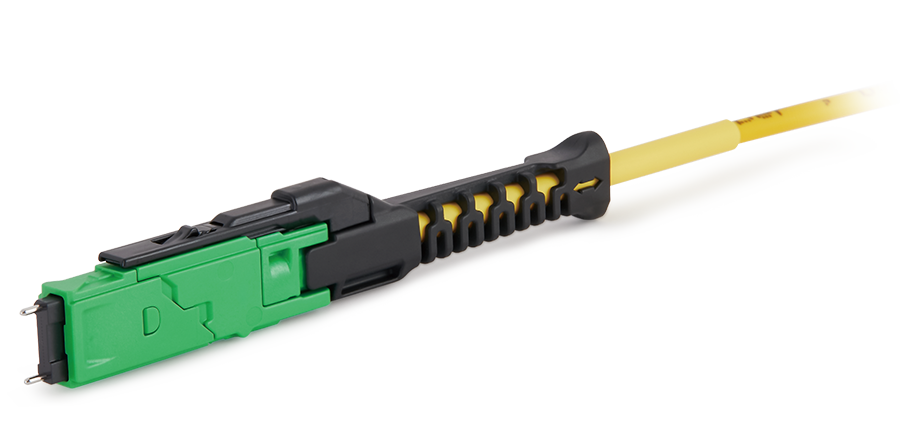1. Labor Standards
Commitment to protecting employee human rights in accordance with internationally recognized standards, ensuring dignity and respect for all employees. This policy applies to all employees, including temporary, migrant, student, contract, direct employees, and any other type of worker.
1.1. Freely Chosen Employment No forced, bonded (including debt bondage) or indentured labor, involuntary prison labor, trafficked labor, or labor under threat, force, coercion, abduction, or fraud is permitted. Workers should not face unreasonable restrictions on entering or leaving work premises. Written employment agreements, in the native language of the employee, must be provided before the employee leaves their country of origin. All work must be voluntary, and workers must be free to leave employment or terminate their contracts at any time. Employers and agents may not withhold, hide, confiscate, or deny access to employees' identity or immigration documents, such as government-issued identification, passports, or work permits, unless legally required to retain work permits. Recruitment fees exceeding one month’s salary must not be charged to workers, and any excess amount must be reimbursed.
1.2. Child and Juvenile Labor No child labor is allowed at any stage of production. “Child labor” refers to workers under the age of 16. Juvenile workers under 18 are not allowed to engage in hazardous work, including night shifts and overtime. Companies must maintain student worker records and protect their rights according to applicable laws. Student workers must receive proper support and training. Wages for student workers, interns, and apprentices must be at least equivalent to those of entry-level employees performing similar tasks, unless local laws specify otherwise.
1.3. Working Hours Work hours must not exceed the maximum limits set by local law. A standard workweek, including overtime, should not exceed 60 hours except in emergency or extraordinary circumstances. Employees are entitled to at least one day off every seven days.
1.4. Wages and Benefits Wages and benefits must comply with all applicable wage laws, including minimum wage, overtime pay, and legally mandated benefits. Overtime pay must be higher than the regular hourly rate, as required by local law. Wage deductions as a disciplinary measure are prohibited. Employees must receive timely and comprehensible pay slips for each pay period, detailing sufficient information to verify proper compensation. Temporary, dispatch, and outsourced labor must be hired according to local legal restrictions.
1.5. Humane Treatment Employees must not be subjected to sexual harassment, sexual abuse, corporal punishment, mental or physical coercion, verbal abuse, or other inhumane treatment. Disciplinary policies and procedures must be clearly defined and communicated to employees.
1.6. Non-Discrimination Employees must be free from harassment and unlawful discrimination. Employment decisions regarding wages, promotions, rewards, and access to training should not be based on race, color, age, gender, sexual orientation, ethnicity, disability, pregnancy, religion, political affiliation, union membership, protected veteran status, genetic information, or marital status. Reasonable accommodations for religious practices must be provided. Employees or prospective employees must not be subjected to medical or physical tests that could be used in a discriminatory manner.
1.7. Freedom of Association Employees’ right to freely associate, join or not join labor unions, bargain collectively, and engage in peaceful assembly must be respected, as required by local law. Employees and/or their representatives must be able to openly communicate with management about working conditions without fear of discrimination, reprisal, threats, or harassment.
2. Health and Safety Requirements
Creating a safe and healthy working environment not only minimizes work-related injuries but also improves product and service quality, increases productivity, and enhances employee retention and morale. An effective health and safety management system, based on ISO 45001, must include at least the following commitments:
1. Conducting comprehensive and ongoing risk assessments.
2. Developing and implementing appropriate action plans to mitigate risks.
3. Establishing health and safety plans and tracking their completion.
4. Implementing systems to monitor non-compliance.
5. Appointing senior management representatives responsible for ensuring a safe and healthy work environment for all employees.
2.1. Occupational Safety Potential safety hazards, such as electrical and energy sources, fire, vehicles, and fall hazards, must be controlled through proper design, engineering, and administrative controls, preventative maintenance, and safe work procedures (including lockout/tagout procedures) and continuous safety training. Where hazards cannot be adequately controlled, employees must be provided with appropriate, well-maintained personal protective equipment (PPE) and educational materials on the associated risks. Employees must be encouraged to raise safety concerns.
2.2. Emergency Preparedness Emergency situations must be identified and assessed, and their impacts minimized through emergency plans and response procedures, including emergency reporting, employee notifications, evacuation procedures, employee training and drills, fire detection and suppression equipment, adequate exit facilities, and recovery plans. These measures must protect people, the environment, and property.
2.3. Occupational Injury and Illness Procedures and systems must be in place to prevent, manage, track, and report occupational injuries and illnesses. This includes encouraging employee reporting, classifying and recording injury and illness cases, providing necessary medical treatment, investigating cases, and implementing corrective actions to eliminate their causes.
2.4. Industrial Hygiene Employees’ exposure to chemical, biological, and physical agents must be identified, evaluated, and controlled. Where engineering or administrative controls cannot adequately manage exposure, workers’ health must be protected through the use of appropriate personal protective equipment (PPE) programs.
2.5. Physically Demanding Work The impact of physically demanding tasks, such as manual material handling, repetitive heavy lifting, prolonged standing, and highly repetitive or forceful assembly work, must be identified, evaluated, and controlled.
2.6. Machine Safeguarding Machinery and other equipment must be assessed for safety hazards. Physical guards, interlocks, and barriers must be installed and properly maintained to protect employees from injury.
2.7. Sanitation, Food, and Housing Employees must have access to clean toilet facilities, potable water, and sanitary food preparation, storage, and dining facilities. Employee housing must be clean, safe, and provide emergency exits, hot water for bathing, adequate heating and ventilation, and access to secure private spaces.
2.8. Health and Safety Communication Employees must receive training on health and safety at the workplace in their native language. Health and safety information must be clearly posted in the workplace.
2.9. Product and Service Delivery The delivery of products and services must adhere to general principles of risk prevention, which include identifying, reducing, and preventing hazards; using competent, trained personnel; and maintaining safe equipment and tools, including personal protective equipment as needed.
2.10. Absolute Rules The following absolute rules must be observed, understood, and enforced to ensure full compliance by all personnel:
Always wear seat belts when driving or riding in a vehicle.
Use proper personal protective equipment (PPE) for working at heights and always use a safety harness during elevated work.
Do not engage in electrical, wiring, or gear work without the necessary qualifications and compliance with related regulations.
Do not work under the influence of alcohol, drugs, or other substances that may impair ability or violate legal limits.
3. Environmental Protection
Recognizing environmental responsibility as an essential part of producing world-class products. During manufacturing operations, efforts should be made to minimize the adverse impacts of products and activities on the community, environment, and natural resources, while also safeguarding public health and safety. An environmental management system should be implemented based on the requirements of the ISO14001 international standard. The environmental standards are as follows:
3.1 Environmental Permits and Reporting All necessary environmental permits (e.g., emission monitoring), approval documents, and registrations should be obtained, maintained, and updated. Operations and reporting requirements set forth in these permits must be complied with.
3.2 Eco-Friendly Design Appropriate measures should be taken to improve the environmental performance of products and services. During the design stage, considerations should be made for the energy efficiency and lifecycle of the products and/or services supplied. Innovative products and/or services should be adopted to provide social and environmental benefits.
3.3 Pollution Prevention and Resource Conservation Efforts should be made to reduce and eliminate all types of resource consumption and pollution (including water and energy) at the source or through practices such as improved production, maintenance, and facility processes, material substitution, resource conservation, and recycling and reuse of materials.
3.4 Hazardous Substances Chemical substances and other materials that pose a danger to the environment should be identified and controlled to ensure their safe handling, transport, storage, use, recycling or reuse, and disposal.
3.5 Wastewater and Solid Waste A systematic approach should be used to identify, manage, reduce, and responsibly dispose of or recycle solid waste (non-hazardous materials). Wastewater from operational activities, industrial processes, and sanitary facilities should be identified, monitored, controlled, and treated as required before discharge or disposal. Additionally, measures should be taken to reduce wastewater generation. Regular monitoring of the performance of wastewater treatment systems should be conducted.
3.6 Air Emissions Air emissions from operations, including volatile organic compounds (VOCs), aerosols, corrosives, particulates, ozone-depleting chemicals, and combustion by-products, must be identified, monitored, controlled, and treated as required before discharge. Regular monitoring of the performance of air emission control systems should be conducted.
3.7 Material Restrictions All applicable laws, regulations, and customer requirements regarding the prohibition or restriction of specific substances in products and manufacturing processes (including labeling requirements for recycling and disposal) should be followed.
3.8 Stormwater Management A systematic approach should be adopted to prevent pollution from stormwater runoff. Measures should be in place to prevent unauthorized discharges and spills of substances into drainage systems.
3.9 Energy Consumption and Greenhouse Gas Emissions Energy consumption and greenhouse gas emissions should be tracked and recorded at the workplace and/or corporate level. Cost-effective methods should be sought to improve energy efficiency and reduce energy consumption and greenhouse gas emissions as much as possible.
4. Business Ethics Requirements To fulfill social responsibility and establish a position of market success, the highest standards of ethics should be adhered to, including:
4.1 Integrity in Business The highest standards of integrity should be followed in all business activities. A zero-tolerance policy should be adopted to prohibit any form of bribery, corruption, extortion, and embezzlement. All business dealings should be transparent and accurately reflected in business books and records. Supervision and enforcement procedures should be implemented to ensure compliance with anti-corruption laws.
4.2 No Improper Advantage Bribes or other forms of improper or inappropriate advantages should not be promised, offered, given, or accepted. This prohibition covers both direct and indirect actions through third parties to obtain or retain business, direct business to anyone, or otherwise gain an improper advantage.
4.3 Disclosure of Information Information on labor, health and safety, environmental practices, business activities, organizational structure, financial condition, and performance should be disclosed in accordance with applicable regulations and leading industry practices. It is not permissible to falsify records or misrepresent conditions or practices within the supply chain.
4.4 Intellectual Property Intellectual property rights should be respected. The transfer of technology or know-how should be conducted in a way that protects intellectual property. Customer information should be safeguarded.
4.5 Fair Trade, Advertising, and Competition Fair trade, advertising, and competition standards should be upheld. Customer information must be appropriately protected.
4.6 Identity Protection and Non-Retaliation Policy Unless prohibited by law, procedures should be in place to protect the confidentiality and anonymity of whistleblowers from suppliers and employees. Procedures should be established to enable employees to raise concerns without fear of retaliation. A whistleblower is anyone who exposes misconduct within a company, its employees, officials, public officials, or agencies.
4.7 Responsible Sourcing of Minerals There should be a commitment to taking reasonable steps to prevent the direct or indirect contribution to armed conflict, human rights abuses, environmental harm, and health and safety risks associated with the extraction or trade of certain metals such as tantalum, tin, tungsten, gold, and cobalt. Due diligence on the source and chain of custody of these minerals should be conducted, and the measures taken should be disclosed to customers upon request.
4.8 Privacy The reasonable expectations of privacy for all individuals involved in business activities, including suppliers, customers, consumers, and employees, should be respected. Privacy and information security laws and regulatory requirements should be adhered to in the collection, storage, processing, transmission, and sharing of personal information.
5. Management System Requirements A management system that is relevant to the scope of this agreement should be adopted or established. The design of this system should ensure that it:
Complies with applicable laws, regulations, and customer requirements related to the supplier’s operations and products.
Conforms to this agreement.
Identifies and mitigates operational risks related to this agreement. The system should also facilitate continuous improvement. The management system should include the following elements:
5.1 Company Commitment A policy statement on corporate social and environmental responsibility, outlining commitments to compliance and continuous improvement, should be issued, signed by executive management, and displayed in the workplace in the local language.
5.2 Management Accountability and Responsibility Senior management and company representatives should be clearly designated as responsible for implementing the management system and associated programs. Senior management should conduct regular reviews of the system’s status.
5.3 Legal and Customer Requirements Procedures should be established to identify, monitor, and understand applicable legal, regulatory, and customer requirements.
5.4 Risk Assessment and Risk Management Procedures should be in place to identify, assess, and manage legal, environmental, health and safety, labor practices, and ethical risks related to operations. Proper controls should be implemented to address the identified risks.
5.5 Improvement Objectives Written performance objectives, targets, and implementation plans should be established to enhance social and environmental performance. Performance should be periodically evaluated against these objectives.
5.6 Training Training programs should be provided for managers and workers to ensure they meet policy, procedural, and regulatory requirements.
5.7 Communication Procedures should be in place to clearly and accurately communicate policies, practices, expectations, and performance to employees, suppliers, and customers.
5.8 Employee Feedback and Participation Procedures should be established to assess employee understanding and gather feedback on practices and conditions, promoting continuous improvement.
5.9 Audits and Assessments Periodic self-assessments should be conducted to ensure compliance with applicable laws, regulations, and contractual requirements.
5.10 Corrective Action Procedures Procedures should be established to correct deficiencies identified in internal or external assessments, inspections, and audits in a timely manner.
5.11 Documentation and Records Documentation and records should be created and maintained to ensure regulatory compliance and adherence to privacy and confidentiality requirements.
5.12 Supplier Responsibility Procedures should be established to communicate guideline requirements to suppliers and monitor their compliance.

 Fiber Optic Flex Circuit (FOFC)
Advanced Simulation & Optimization, High Positioning Accuracy, Flexible Customization, Rigorous Reliability Testing
Fiber Optic Flex Circuit (FOFC)
Advanced Simulation & Optimization, High Positioning Accuracy, Flexible Customization, Rigorous Reliability Testing MDC Solution
US Conec's MDC connector is a Very Small Form Factor (VSFF) duplex optical connector, expertly designed for terminating single-mode and multimode fiber cables with diameters up to 2.0mm.
MDC Solution
US Conec's MDC connector is a Very Small Form Factor (VSFF) duplex optical connector, expertly designed for terminating single-mode and multimode fiber cables with diameters up to 2.0mm. MMC Solution
US Conec's Very Small Form Factor (VSFF) multi-fiber optical connector that redefines high-density connectivity with its cutting-edge TMT ferrule technology and intuitive Direct-Conec™ push-pull boot design.
MMC Solution
US Conec's Very Small Form Factor (VSFF) multi-fiber optical connector that redefines high-density connectivity with its cutting-edge TMT ferrule technology and intuitive Direct-Conec™ push-pull boot design. EN
EN
 jp
jp  fr
fr  es
es  it
it  ru
ru  pt
pt  ar
ar  el
el  nl
nl 
